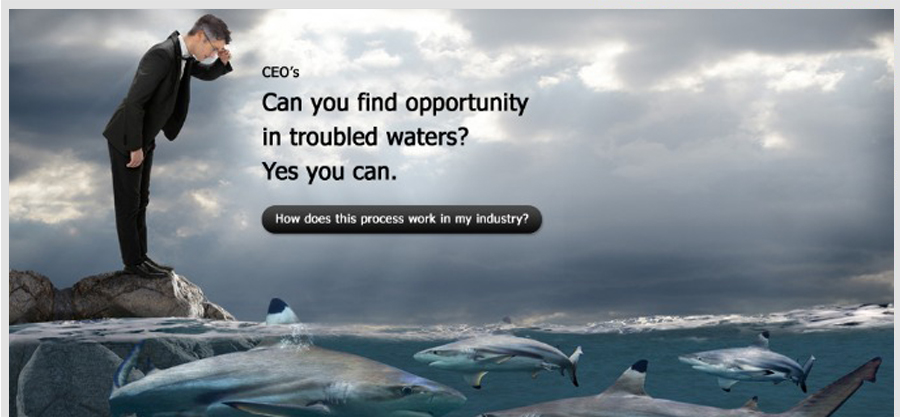NeuroMarketing: Use these 7 tips to cut through the noise and write powerful copy to drive your email and web sales
I am often asked, how do you write the copy that you do, how you do write good neuro copy? Is there a formula? This is a difficult question because when you have been creating email and web campaigns for as long as I have, well you just … umm write. However, when I look back at some of the most successful pieces I do see that there is a pattern to my thinking, a gathering of best practice information over the years; a formulaic 1,2,3 checklist if you may. So, I will do my best to unpack my “formula’ here for you.
But first let me start off by what NOT to do.
1. DON’T TRY AND IMPRESS YOUR READERS
As a student of English – my major at school – when I first entered the world of advertising, I started off by writing copy that would have pleased my teachers. In school, long sentences with big words to impress my customers [my teachers] gave me good grades [sales], because that was what my teachers [customers] wanted. So, this is how I wrote when I first started writing sales copy.
But I quickly moved on to new learning when I realised the foolishness of writing to impress. At that stage I was living in London and to pass the time on the long underground commute, I became an avid reader of articles in The Times and Daily Telegraph. How I loved the beautiful language, the clarity of thought; the beginning, middle and end, the knowledge and understanding of the day’s events that good journalism imparted.
2. SHORT SENTENCES
I soon found that the easiest articles to read were those with short sentences. This is especially important when writing for screen. Less is more. Don’t make the brain work. Ruthlessly go over the copy and remove any extra wording.
There is a technical reason for short sentences. In reading, the eye travels from the capital letter to the full stop. The brain makes sense of the words as a grouped thought, not as single words. Culling your beautiful words and turning long sentences into short ones is difficult, yes, but it’s well worth the effort. Consider your writing done only when there are no more words to take out.
3. TELEPHONE TALK
Still later I moved to new learning when I realised that my copy was most effective when I wrote “telephone talk”. Write it as you would tell someone on the telephone. You have very little time to make your point. It’s not a conversation where you can “explain” yourself. You have to let the listener get the message in a few words. Use ordinary words. And no warming up. Just start.
4. BODY COPY HEADLINES
Another tip is to break up the body of the copy with relevant headlines. This turns the information into bite-size pieces. It’s easier to digest and allows the eye [and brain] to jump-skip through the message. Taking this to the next level in email or web design; write short paragraphs with headlines and then create colour or picture blocks to hold these paragraphs. See example at this link www.kscope.co.za
5. WORDS OF TWO SYLLABLES
When I write copy, I hunt down the words of three syllables or more and try and replace them with one or two syllables max. This has become a game for me and has enriched my word knowledge. To do this I turn to my online thesaurus.
6. AVOID ADJECTIVE STRINGS
When you’re passionate about your subject it’s tempting to pad your sentence with a string of adjectives e.g. The plush, beautiful, sumptuous dining room decor added to the atmosphere of the house’s extreme luxury. Choose one only i.e. The sumptuous dining room decor added to …
7. MAKE IT PERSONAL – The essence of NeuroMarketing
Here’s the most basic and fundamental point, the main theme around my copywriting for email and web. When I’m doing my job well, I am writing something precise, something specific enough that it feels personal. This is the only way that marketing copy can make a meaningful connection. Why would this person need the service that I am selling? Not only why would they want it, but why would they want it enough to throw money at it?
That brings me to the WHY? – a formula which I use most frequently when conceptualising a website or an ecampaign for a client. At the top of my briefing page I write the word WHY? And then I ask my client to describe what is going on in his/her customer’s life. What are the problems that could lead to the customer paying money for a solution?
This is not as easy as it sounds.
The WHY? has to be specific and familiar. It relates to the feelings and emotions of the reader. Something meaningful, something real in your customer’s experience, not general or passive. The most meaningful copy is so personal that it feels private. The words crystallise what the reader is feeling. It feels like it fits, it describes me, how I am feeling, an emotion so personal that I simply must have your solution. For this you need deep knowledge, an insider’s understanding of what your customer is buying. And I repeat, this is often not what you are selling as the examples below explain.
 Colleen Backstrom
Colleen Backstrom
Colleen Backstrom is Director of NeuroMarketing, Kaleidoscope, a global leader in applied NeuroMarketing for Digital. She specialises in creating B2B email and web campaigns and optimising Zoom/Teams selling by converting existing sales pitches to NeuroMarketing.

You’re never too cool to learn something new...
Never miss another NeuroMarketing update

Success! Thank you for signing-up
You'll never miss another NeuroMarketing update!
Example 1
My company, Kaleidoscope, provides a service in the design of digital campaigns specifically NeuroMarketing for eMail and Web. What I would like to say is “Buy my NeuroMarketing, it’s awesome!”.
But here’s the problem.
My clients don’t want NeuroMarketing-for-email-and-web. They want something else. They want an outsourced service to find new clients. They want value for money. They want sales and ROI. And they want guarantees. So, the WHY on our home page could read like this.
Why?
Your email marketing isn’t working anymore; and you’re tired of hit and miss.
You want a fresh new sales tool, one that’s more predictive
– and doesn’t break the budget.
And most importantly you want your agency to guarantee design ROI.
Example 2
My client sells clear plastic boxes for sandwiches. But his client, the deli owner is not buying a plastic box, he is buying a “fresh sandwich display”. So, the headline copy becomes not, “buy my plastic box” but “buy my fresh sandwich display” along with a picture of a fresh sandwich display.

Example 3
A client sells Strategic Consulting. But who wants to buy Strategic Consulting? What can we say that will truly feel personal and relevant to our target market, the CEO? Would we get the CEO’s attention if the headline looked like this?
The CEO and Strategy – can you find opportunity in toubled waters

CLEAN SHEET THINKING
May I suggest you pause for a moment and do some clean sheet thinking? Take a sheet of paper and write WHY? at the top of it in big letters. And then, forgetting all the cliches and wording that has gone before, put yourself in your client’s headspace and write down the real reason he or she would want your service enough to pay money for it. Try and find the one, most fundamental reason. And then compare this with what’s currently at the top of your ecampaign and your website home page.
SO WHAT?
And lastly a tip that we find useful here at Kaleidoscope; the SO WHAT? filter. In answer to the question, what do you do, we worked through this exercise.
e.g. We do wonderful digital campaigns… SO WHAT? Everyone does wonderful digital campaigns.
We do awesome websites…. SO WHAT? Every man and his wife does awesome websites.
We write great copy… SO WHAT? My grandmother writes great copy.
…and that’s how we came to this what-do-you-do? answer
We find new clients for corporates, design ROI guaranteed.

You’re never too cool to learn something new...
Never miss another NeuroMarketing update

Success! Thank you for signing-up
You'll never miss another NeuroMarketing update!
Stay updated on NeuroMarketing Events & Tips
Outsource your web and email marketing to us; we apply NeuroMarketing to your sales message to engage your client’s “buying” brain. And in an uncertain and emotional world - the perfect time and space in which to apply neuroscience - you now have the opportunity to make this year, your best year ever.
Kaleidoscope respects your privacy, view our Privacy Policy here
"One small POSITIVE THOUGHT in the morning, can change the entire outcome of your day."